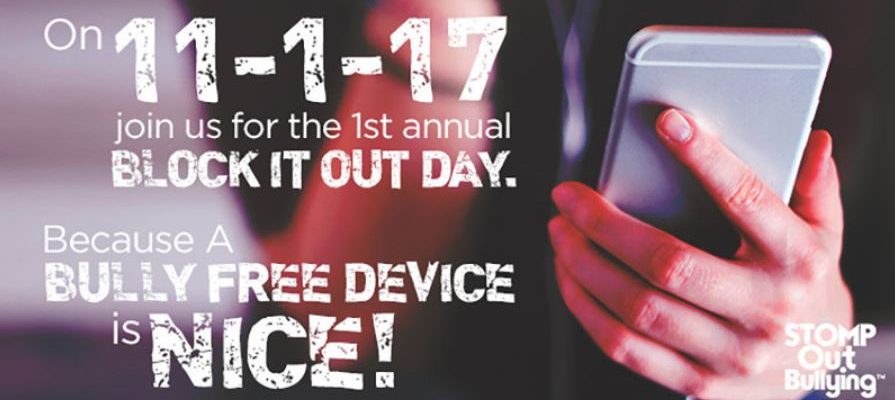NEW YORK, Nov. 1, 2017 – On Wednesday, November 1, 2017, STOMP Out Bullying™ is asking youth around the world from every corner of the web to block out their bullies, erase negative messages, and create a positive, safe digital place for youth everywhere. The leading anti-bullying and anti-cyberbullying organization is also asking youth to encourage and empower their friends to do the same creating a chain reaction that it hopes will erase cruelty, homophobia, LGBTQ discrimination, racism and online hatred. Students from the High School of Fashion Industries in New York City will be the inaugural group to activate #BlockItOutDay and invite thousands of other schools across the country to join them.
“We’re standing up and saying enough is enough to the trolls and haters who show up on our social channels, on our phones and in our emails,” said Benjamin Beaudoin, 14-year-old from Tenney School in Methuen, Massachusetts. “The only ones who can block out the bully online is ourselves and if we can get our friends to do the same, we’re hoping to shut the bullies out for good. Even if for one day.”
“Every student has the power to choose what they give their attention to online. They can choose to block out the online hatred, trolls and bullying that makes up the culture of cyberbullying,” said Ross Ellis, CEO and Founder of STOMP Out Bullying™. “We are asking youth to block the negative messages they receive from social media, create a safe positive online space, and ask their friends to do the same – creating a chain reaction. Our overarching mission is to turn a culture of cruelty into a culture of civility.”
Cyberbullying is when someone repeatedly and intentionally harasses, mistreats, or makes fun of another person online or while using cell phones or other electronic devices. Approximately 34% of the students surveyed by the Cyberbullying Research Center have experienced cyberbullying in their lifetimes. When asked about specific types of cyberbullying experienced in the previous 30 days, mean or hurtful comments (22.5%) and rumors spread online (20.1%) continue to be among the most commonly-cited. Twenty-six percent of the sample reported being cyberbullied in one or more of the eleven specific types reported.
“When it comes to cyberbullying, an ‘out of sight,’ ‘out of mind’ philosophy is an extremely effective strategy,” Ellis added. “When someone who is being harassed and trolled online, often and aggressively, continues to allow that harasser access to their social media, they willingly give their bully the power. This only allows bullying to continue. It takes bravery, but when a person blocks out their bully and asks their friends to do the same, they have the power to come together and create a ripple effect that erases the spread of hate and cruelty on social media.”

